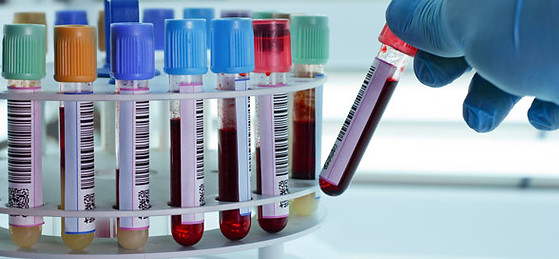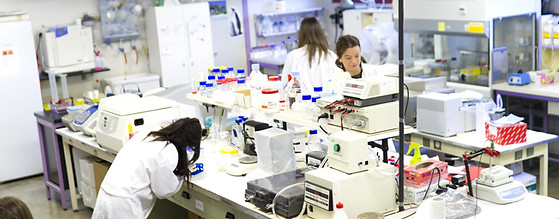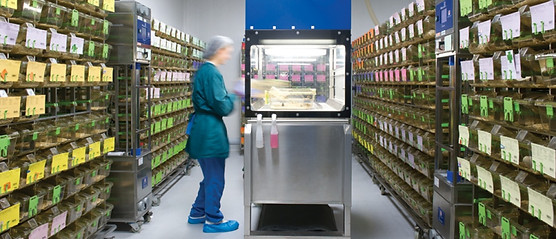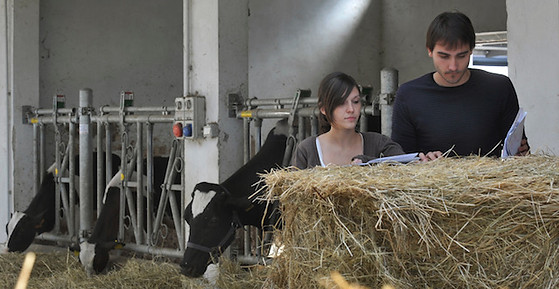




The MRH supports research across a wide spectrum of microbiome-related topics, all aimed to of devise methods for improving human and animal health by manipulating microbial populations. One of the main aims of the MRH is to provide an open research and knowledge platform for microbiome interested investigators, so as to foster interdisciplinary interactions. The MRH translates new knowledge on human and animal microbiomes in different research areas and provides a research & technology resource which will allow scientists and industries to investigate the microbiome with potential to change the face and future of healthcare.
The MRH aims to deliver innovative research that establishes Italy as a center of excellence in human/animal health, to help the development of industry and to attract multinational companies to Italy to engage in collaborative research programs.
RESEARCH
on microbial population
The Microbiome Research Hub supports studies evaluating contributions of the microbiota in health and disease. Core resources include:
4.
Pathology/Immunology Unit
This Unit provides a link between the information collected by the Molecular Microbiology Unit and the molecular mechanisms underlying human disease. The Unit has an established experience in morphological, functional and molecular studies on cultures of epithelial cell models and innate immunity cells. These skills are exploited to assess the consequences of the interaction between human cells and microbiota components or microbial metabolites identified by the Probiogenomics Laboratory and the Veterinary and Nutritional Units. Particular attention will be devoted to alterations of barrier function in models of gut epithelium, and to the pro-inflammatory alterations induced in innate immunity cells by bacterial components.
2.
Probiogenomics Laboratory
The Molecular Microbiology Unit (Probiogenomics Laboratory) provides microbiological support for the culture of aerobic and anaerobic bacterial species, genetic characterizations, continuous chemostat/fermenter analyses, and has access to a large strain repository of human and animal commensal species and pathogens, including genetically tenable strains and systems developed by the Unit. Furthermore, the Unit offers Next Generation Sequencing (NGS) studies including 16S rRNA gene phylotyping, ITS bifidobacterial profiling, shotgun metagenomics analysis, metatrascriptomics investigations, bacterial whole-genome sequencing, and multiple qPCR/rtPCR analyses. The Unit also includes a Computational team, which evaluates complex, longitudinal dynamics of the microbiota in correlation with the host. This is made possible by dedicated computing nodes processing bioinformatics pipelines for multi-omics data integration and statistics.
1.
Animal Facility and stress physiology
This Unit is authorized for breeding of rodents (rats and mice), and includes 3 housing/breeding rooms, 1 micro-surgery room and 2 experimental rooms for in vivo testing. In addition, this Unit provides the know-how and laboratory facilities/instrumentations for both animal and human research. Animal research involves, among others, (i) radiotelemetric monitoring of physiological data (electrocardiograms, blood pressure, body temperature, physical activity) in freely moving rodents, blood and organ collection for various biochemical analyses (e.g. corticosteroids, catecholamines, androgens and oestrogens, BDNF), and (ii) behavioral testing for social and non-social anxiety, depression, anhedonia, and aggression. Human research activities have focused on (i) Bluetooth-based technology for ECG, respiration, and activity measurements in freely moving subjects, (ii) ELISA testing for salivary hormone concentrations, (iii) video recording systems and ethological analysis, (iv) psychometric questionnaires for anxiety, depression, coping strategies, stress, type D behavior, etc.
5.
CLIA: Clinical Laboratory
The CLIA (Clinical laboratory) Unit, which provides integration between biological science and the clinical world, giving support for the design and realization of clinical studies, including trials, investigating the role of the human microbiome in different fields of medicine. The Unit is based in a University-hospital representing a center of excellence for care and research in several areas of medicine, including gastrointestinal diseases, kidney diseases and aging. Its members have a long-term experience in designing and conducting clinical studies and in data management.
6.
Veterinary Unit
The Veterinary Unit, which provides microbiological support for the isolation and cultivation of commensal and pathogenic strains isolated from different animal species including both farm- and companion- animals. Furthermore, the Unit offers a physiological characterization as well as a genotypic evaluation of the isolated microorganisms. The Unit also carries out profiling of the gut microbiota composition in animals, which is applied as an active prevention strategy to control infectious diseases in particular for zoonosis.

3.
Nutritional Unit

The Unit provides competence in Human Nutrition, both at in vitro experimental level and in the framework of human intervention studies. The main focus of this Unit’s research is the understanding of the biomolecular transformations of dietary components after interaction with the human microbiota, with a specific focus on phytochemical compounds widely present in plant foods. The research Unit offers up to date chromatographic and mass spectrometric facilities, a wide array of in vitro experimental models to test microbial metabolites, and, in strict collaboration with the CLIA Unit (see below, Core resource no. 5), the infrastructure and the competence to conduct state-of–the-art human intervention trials.

